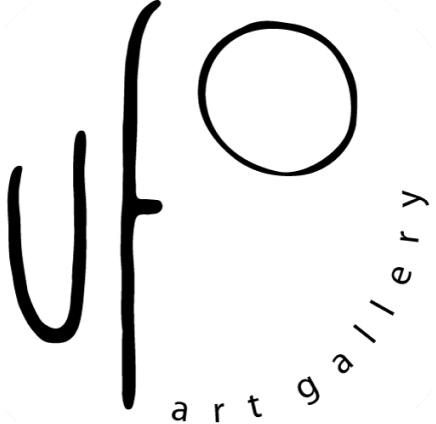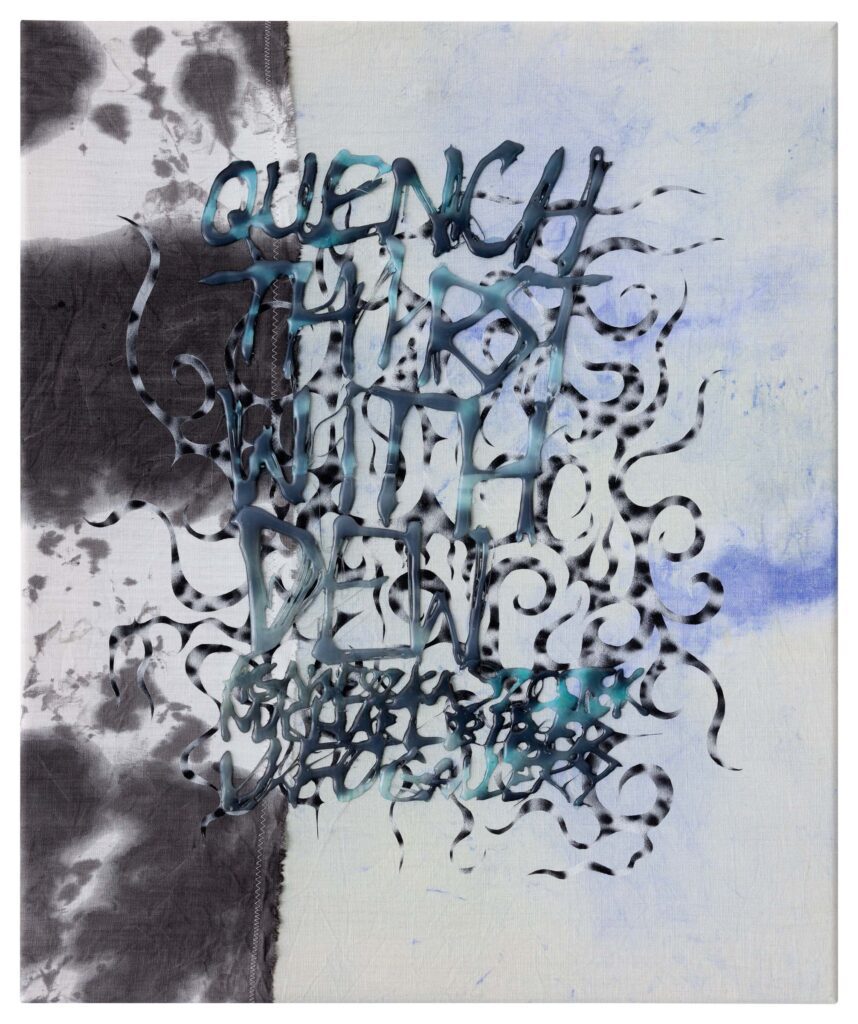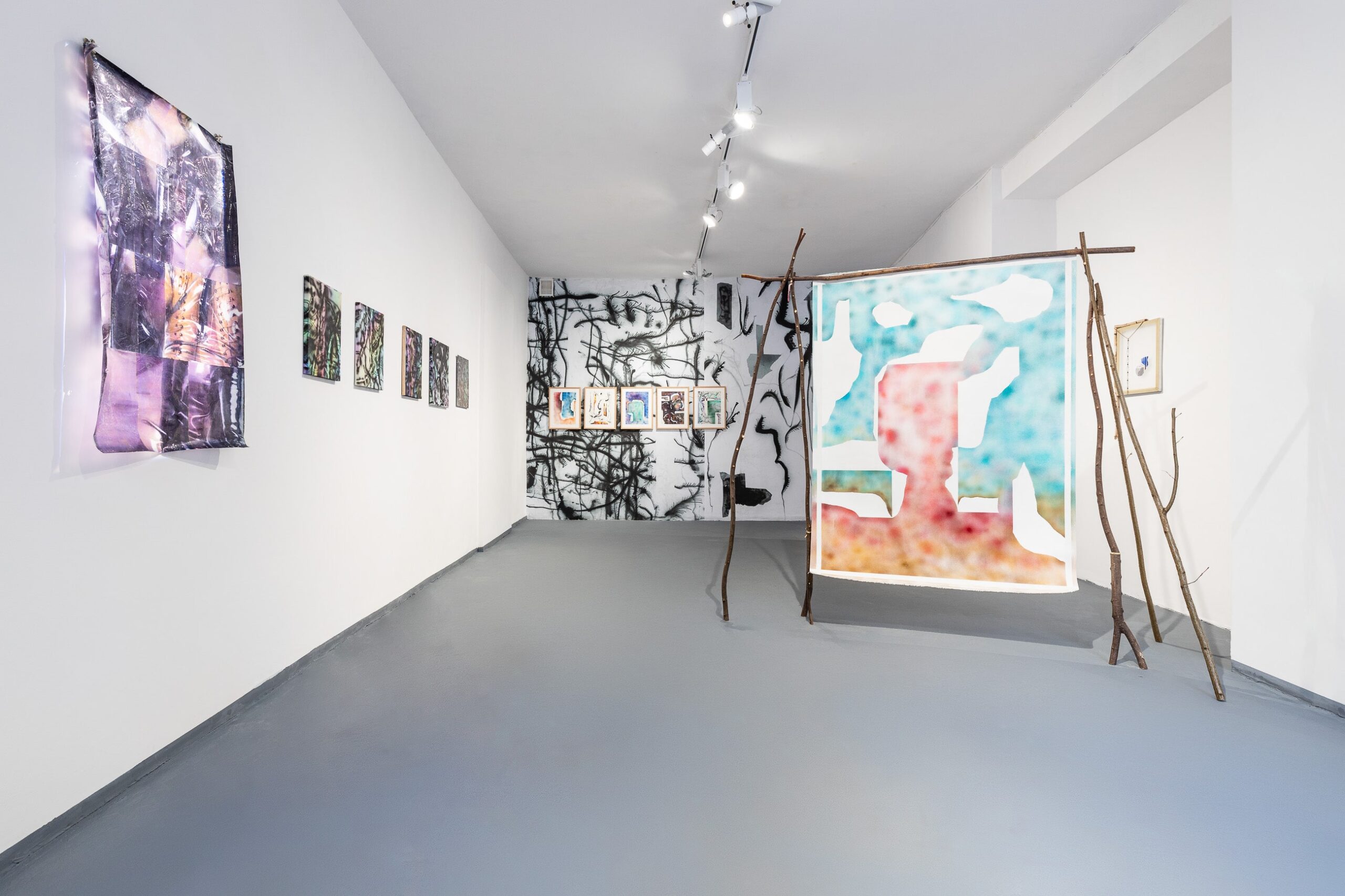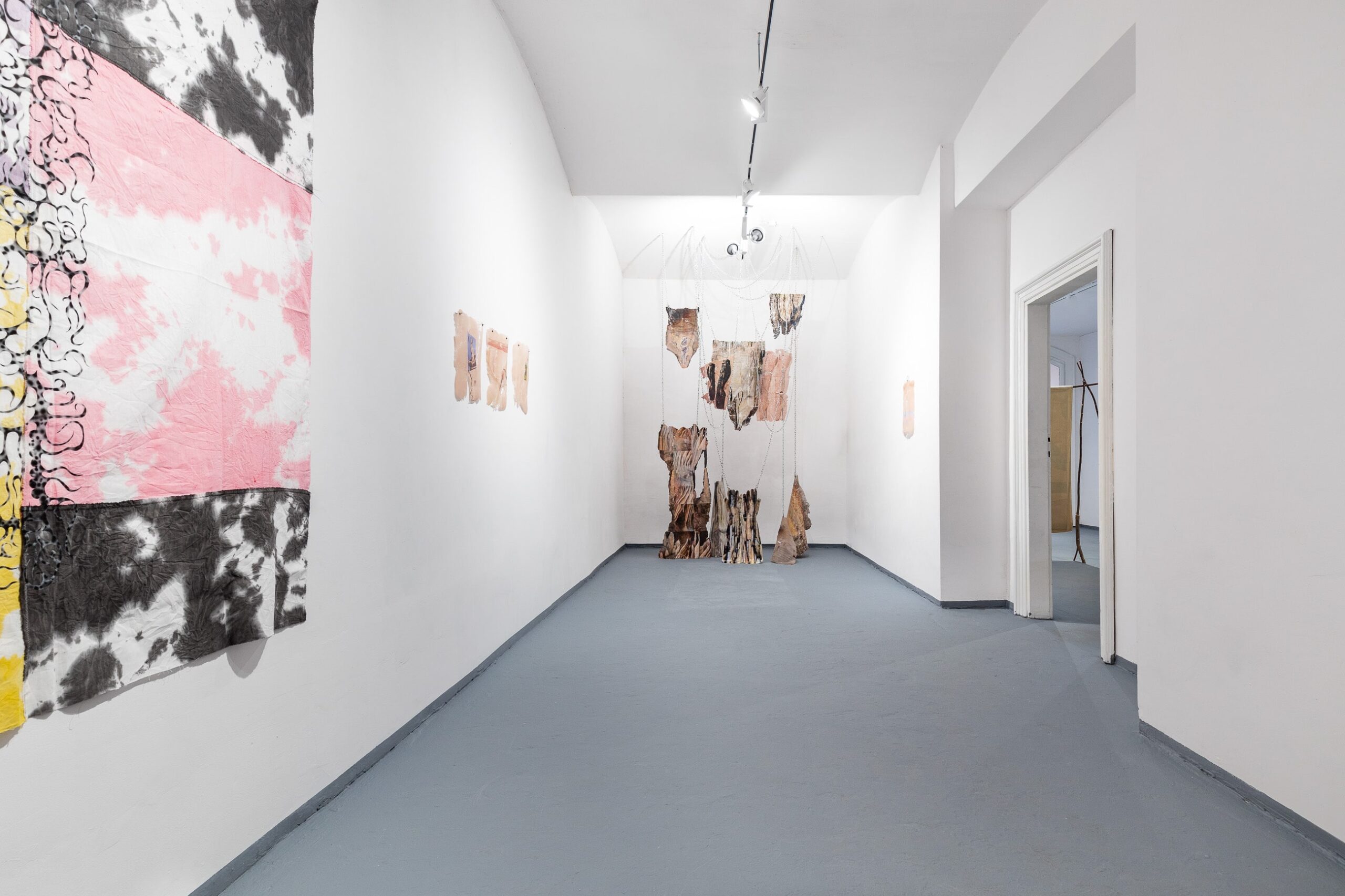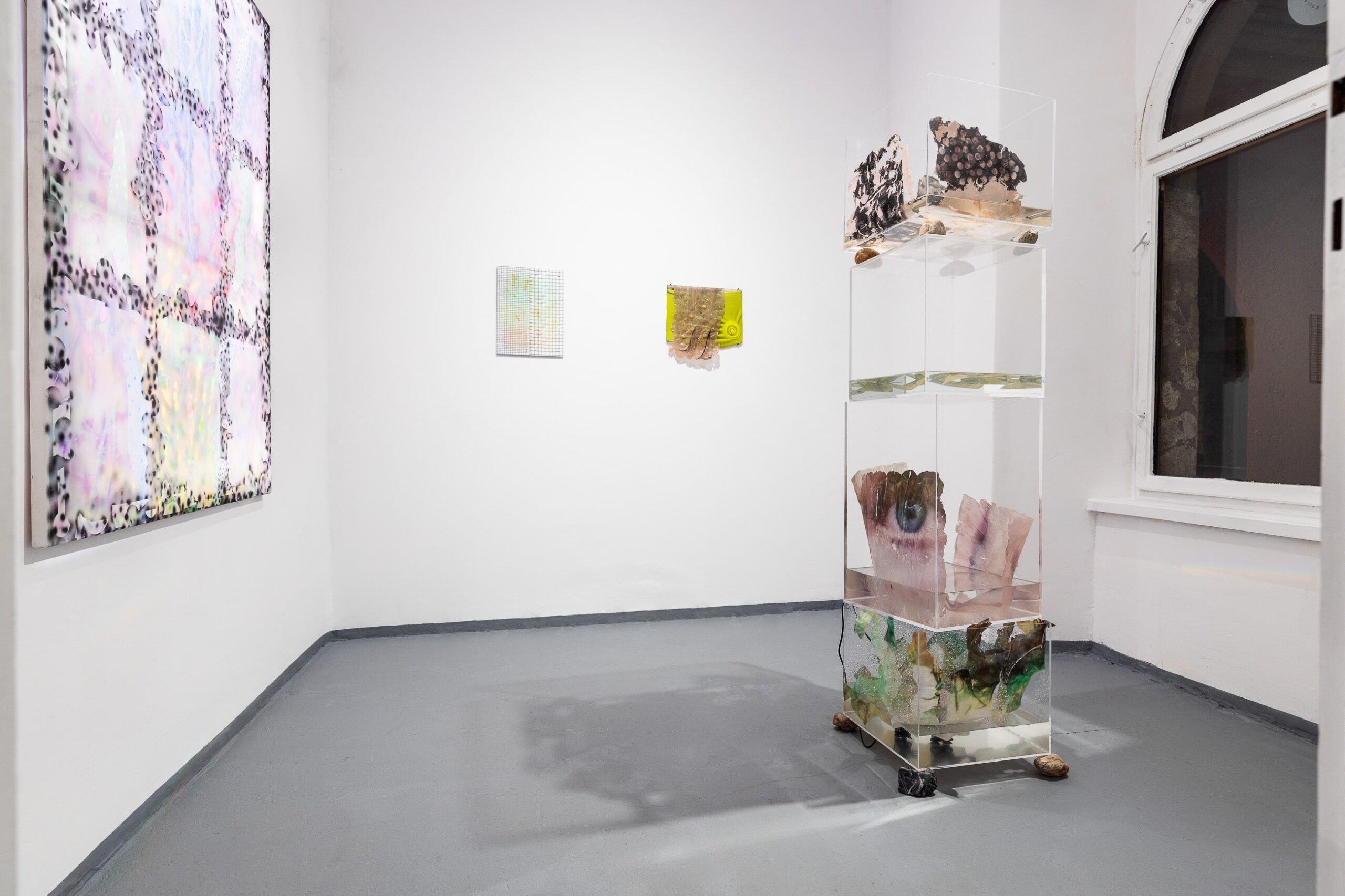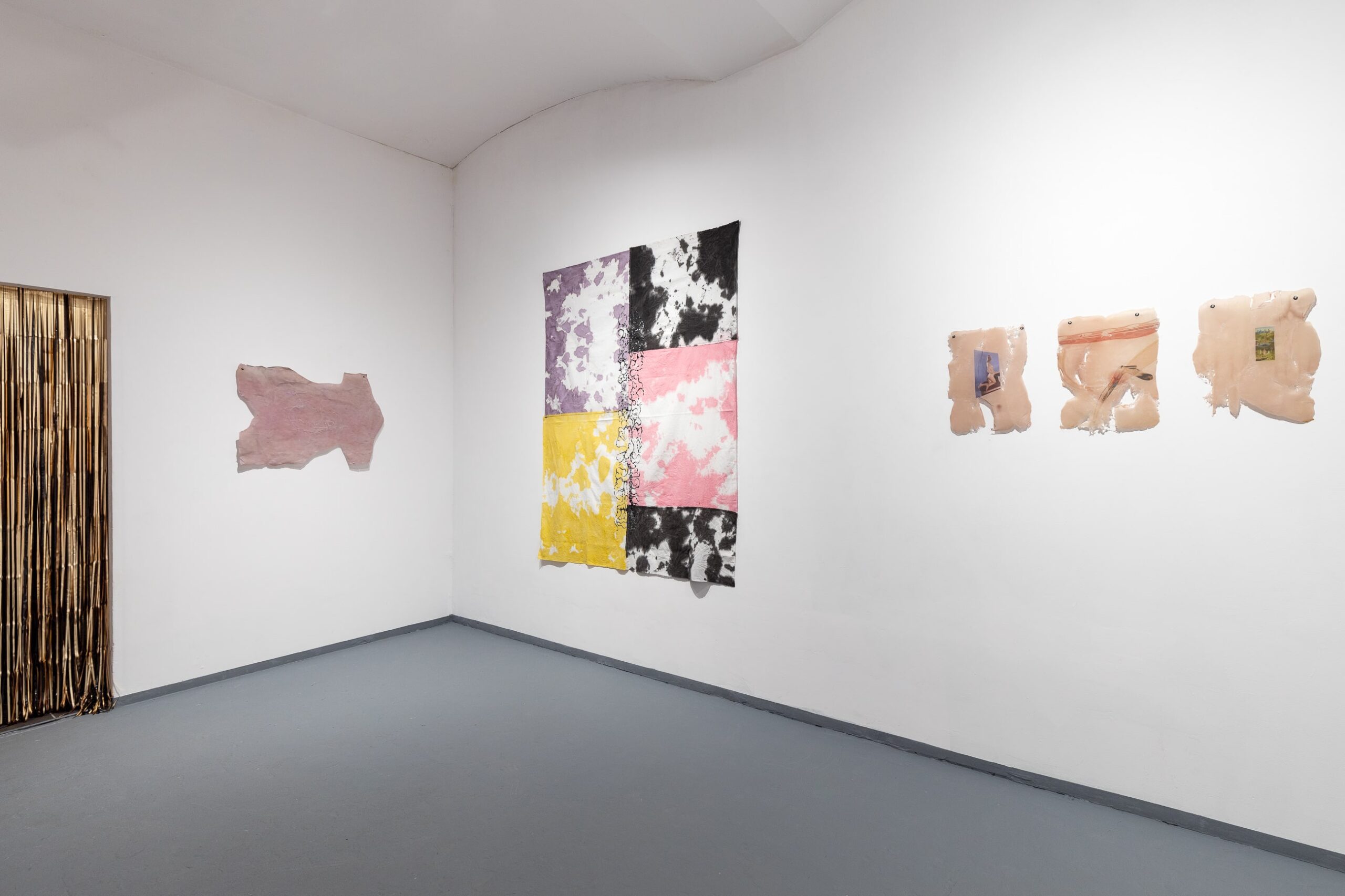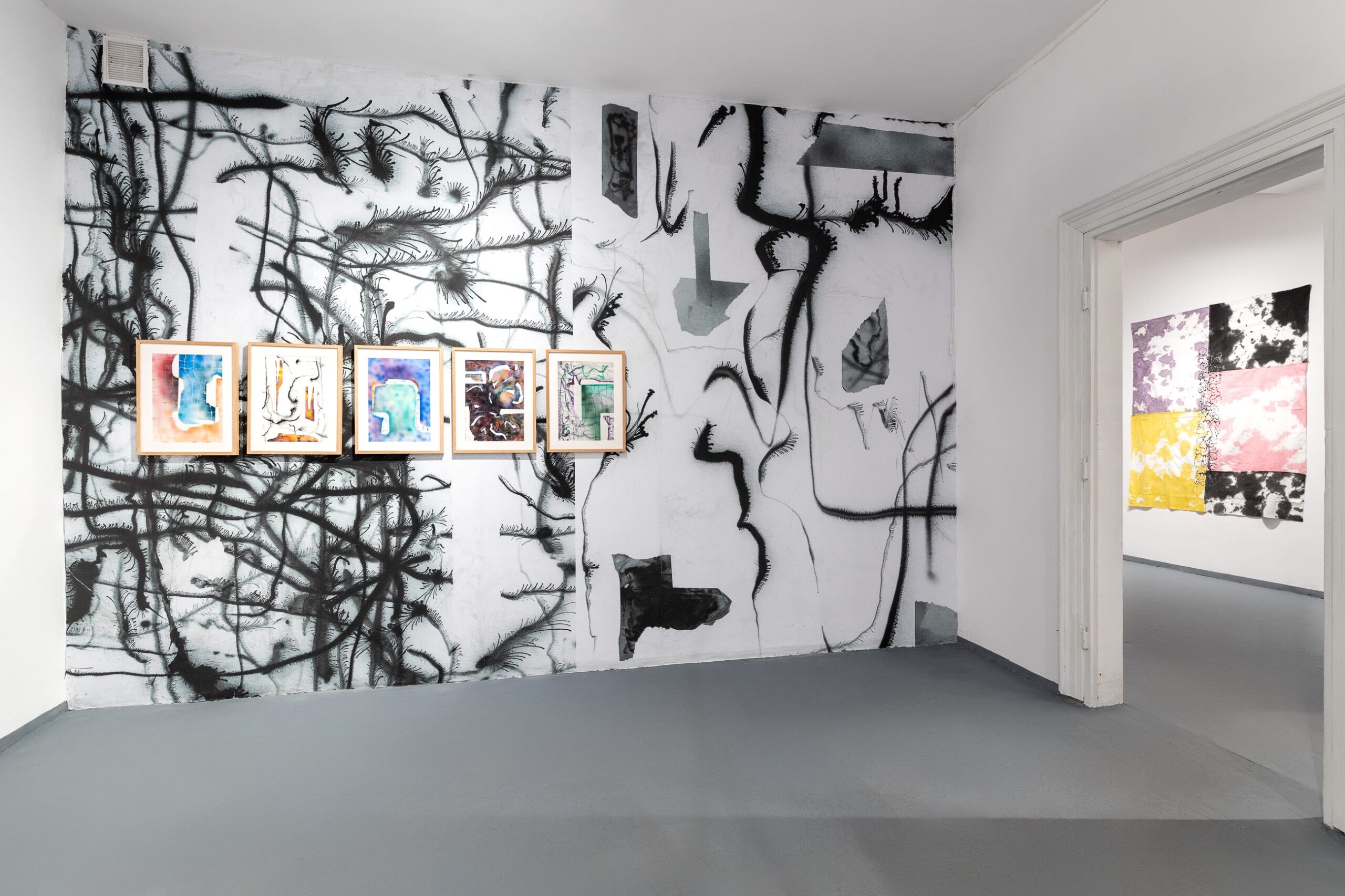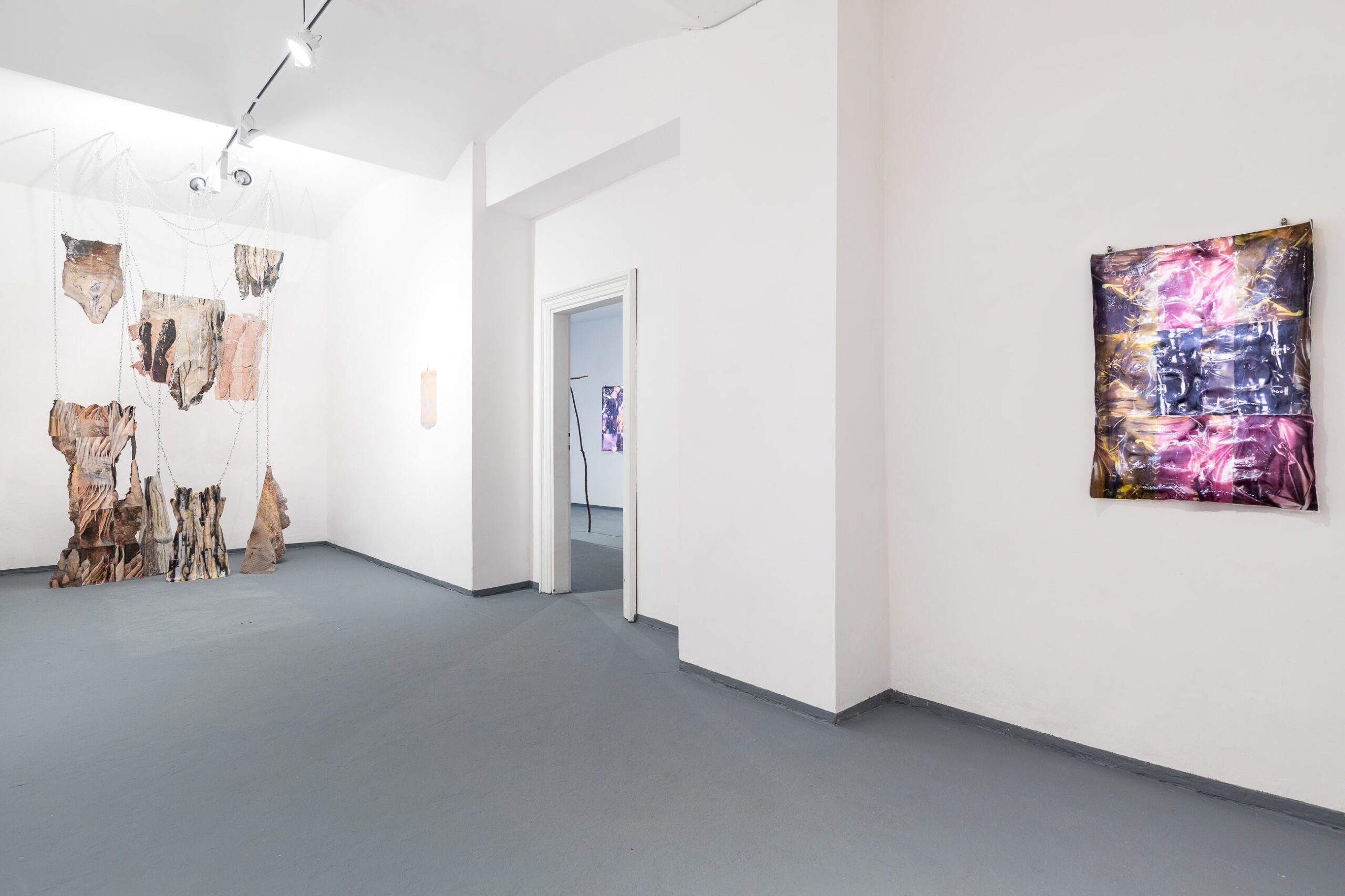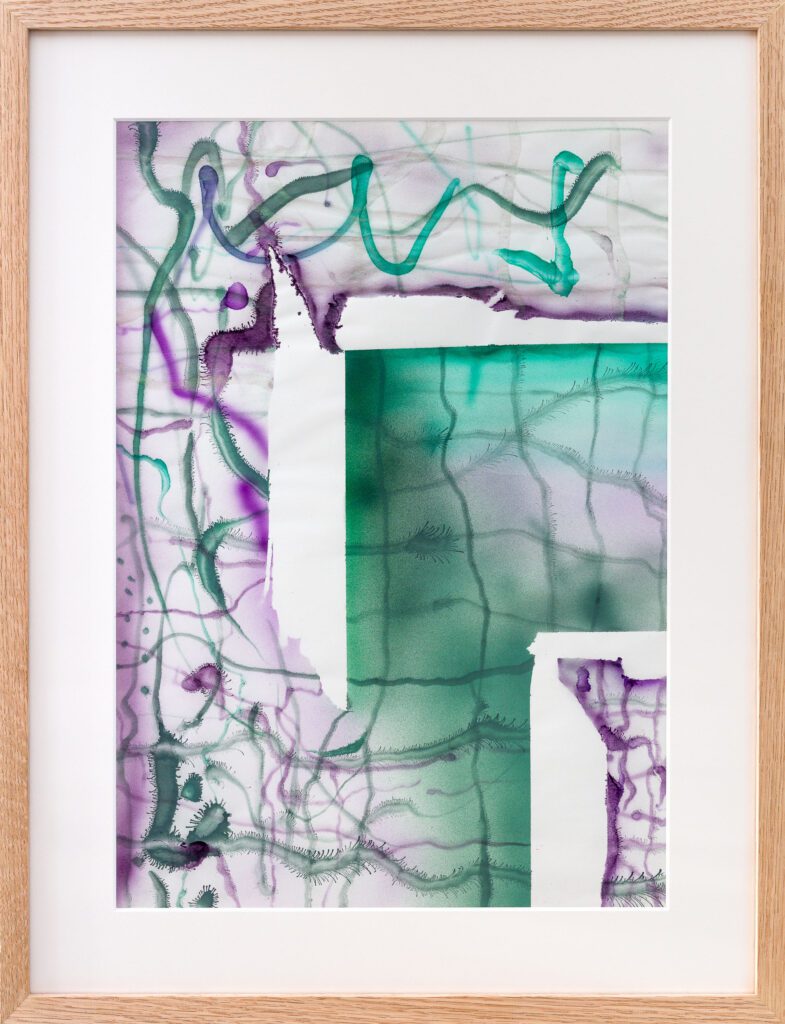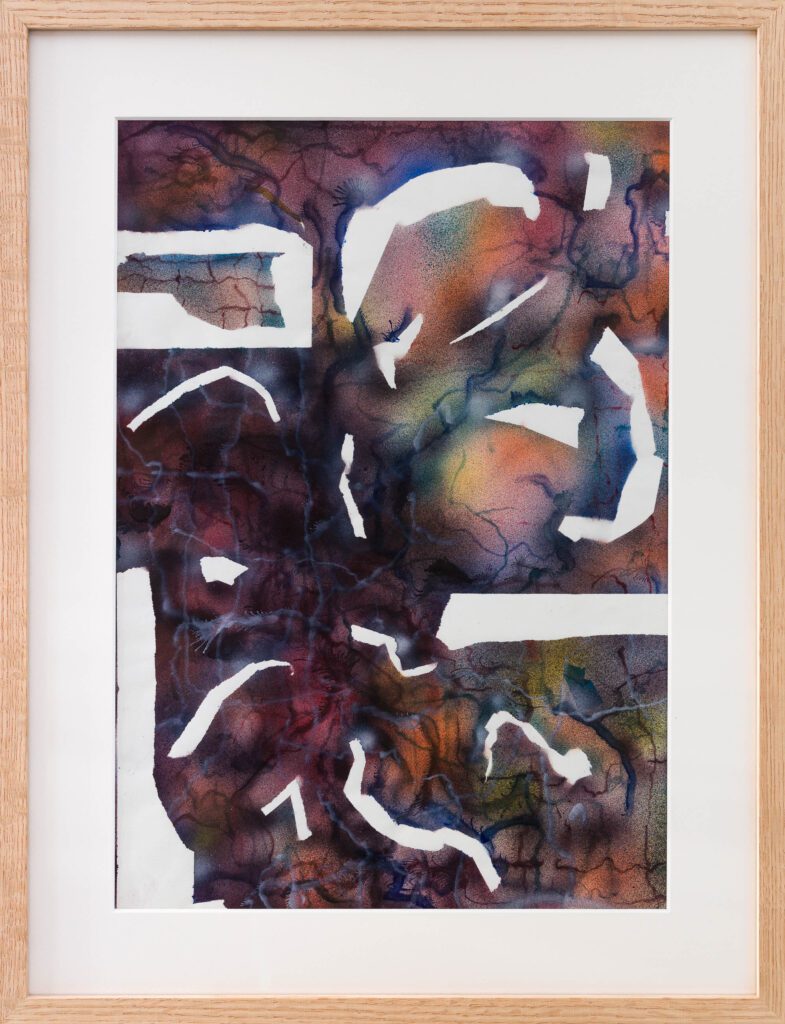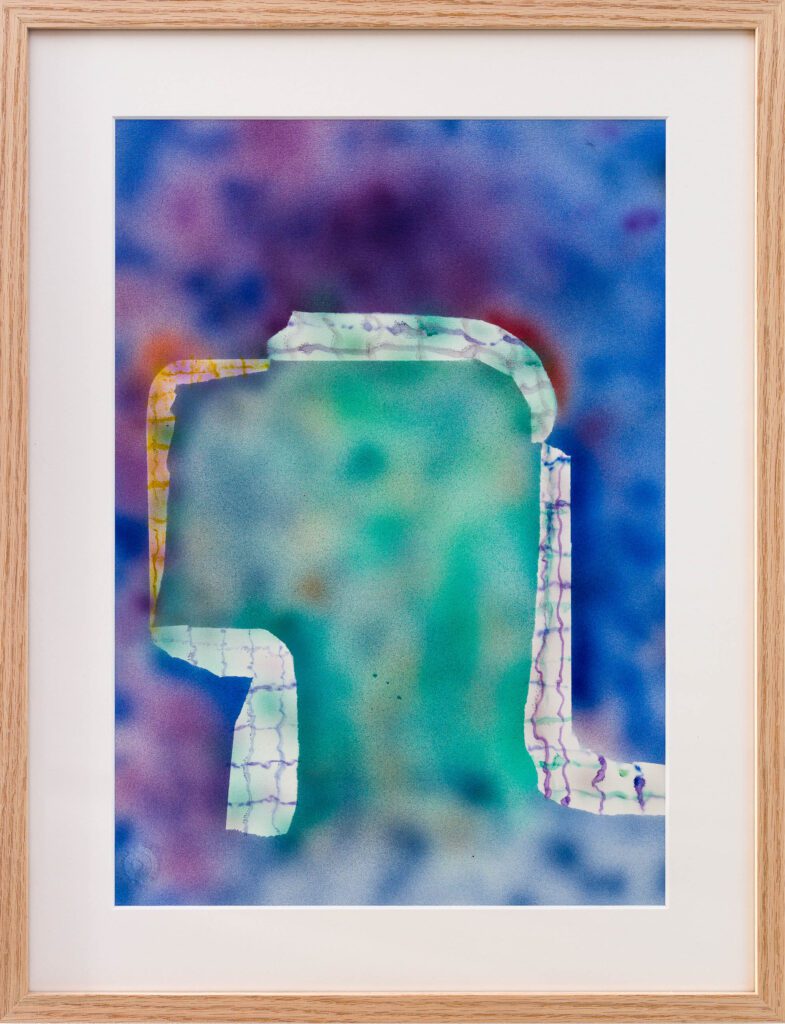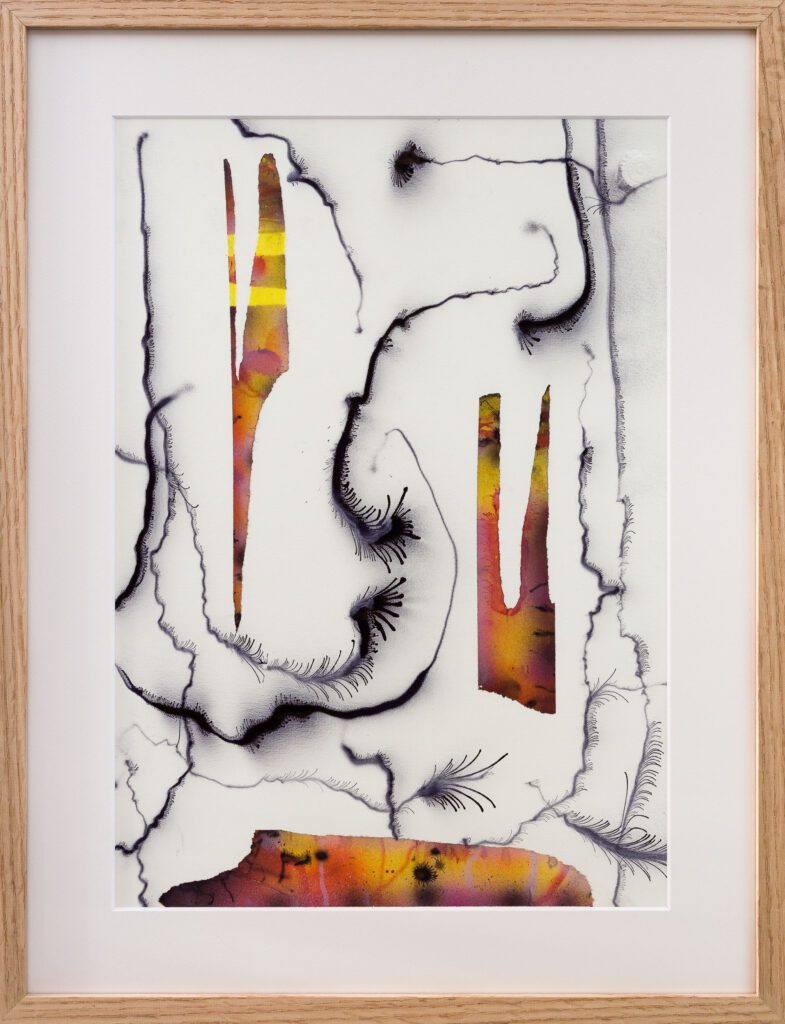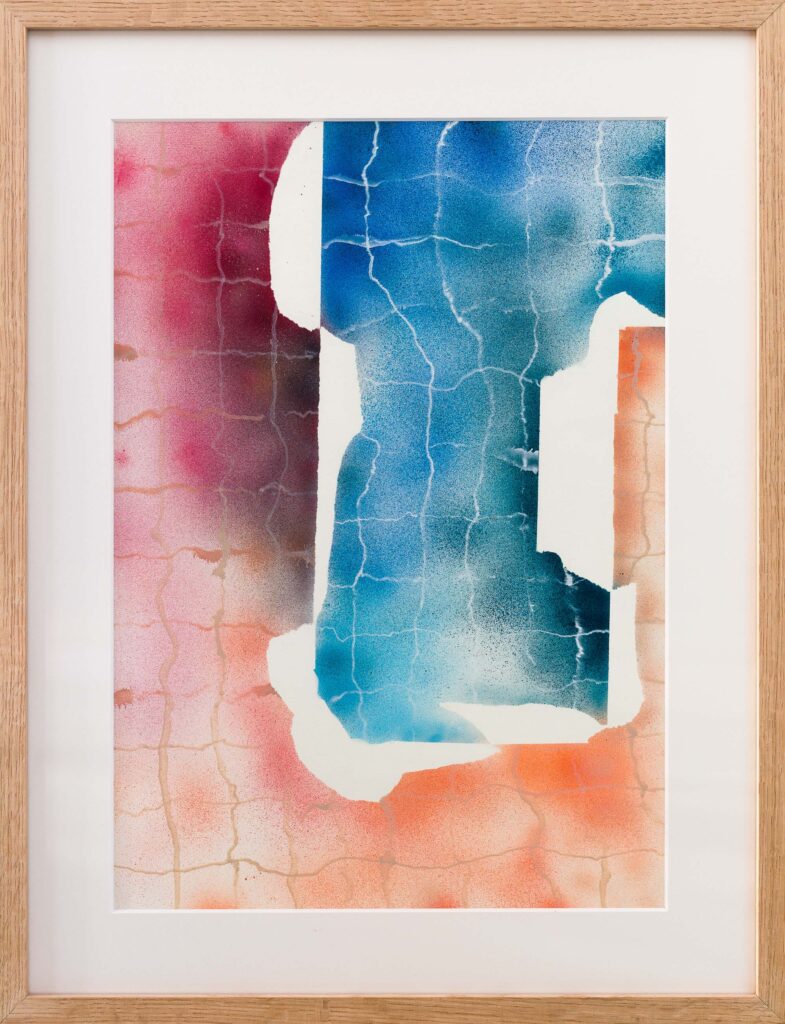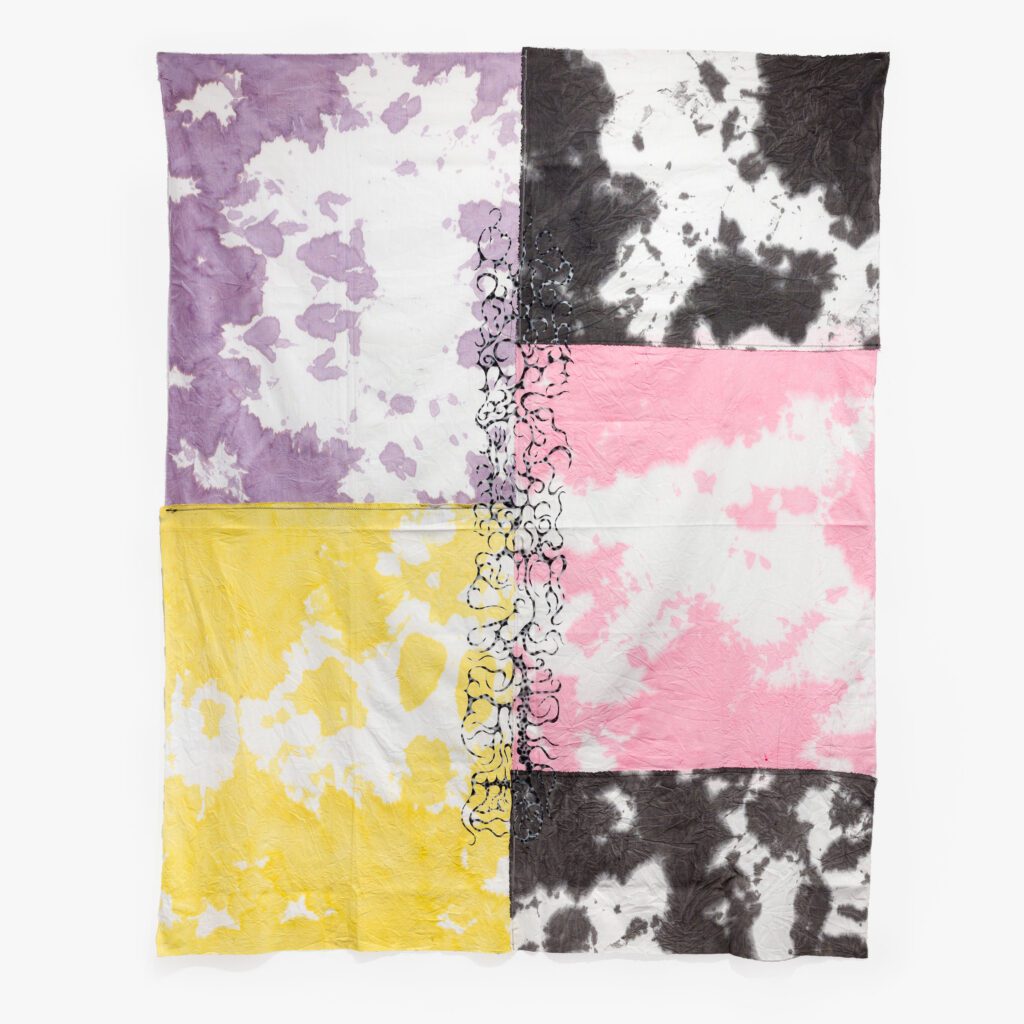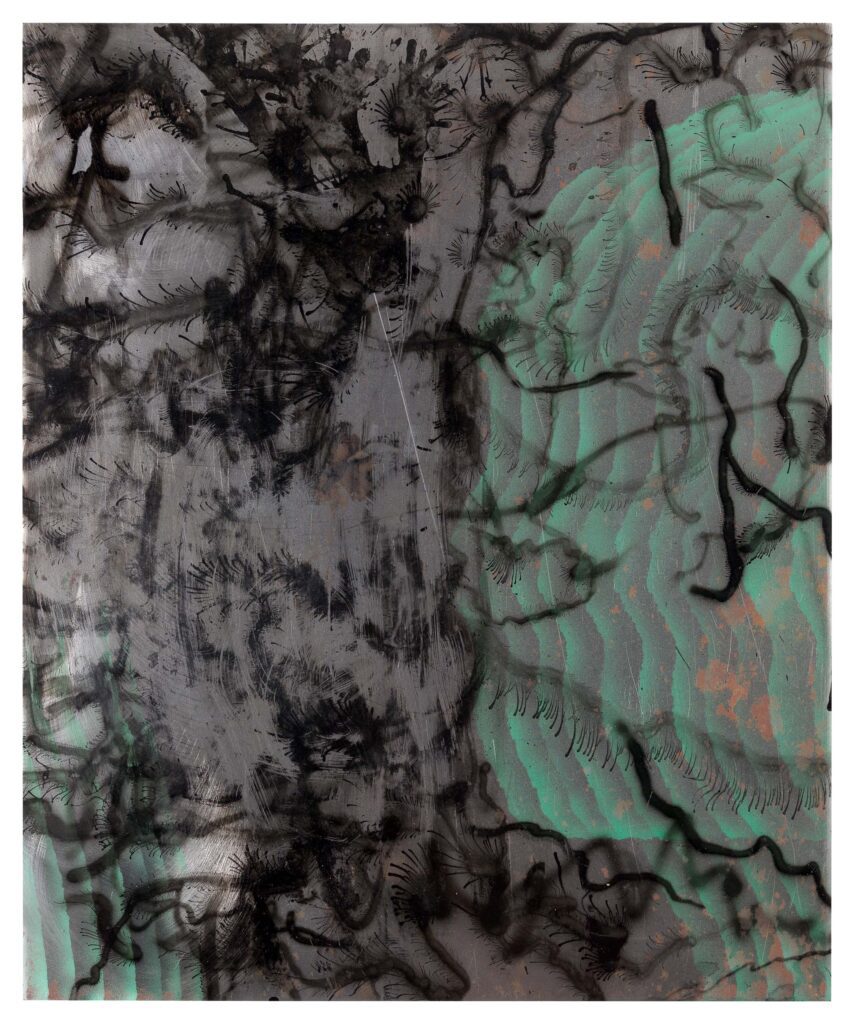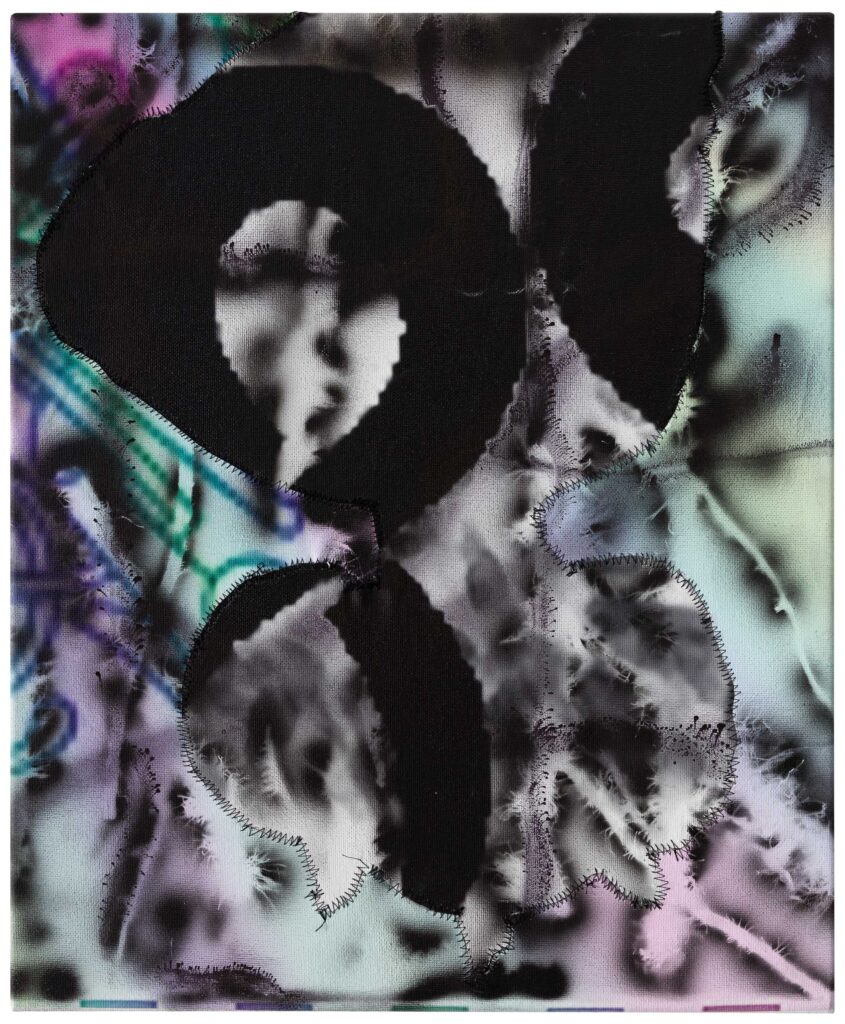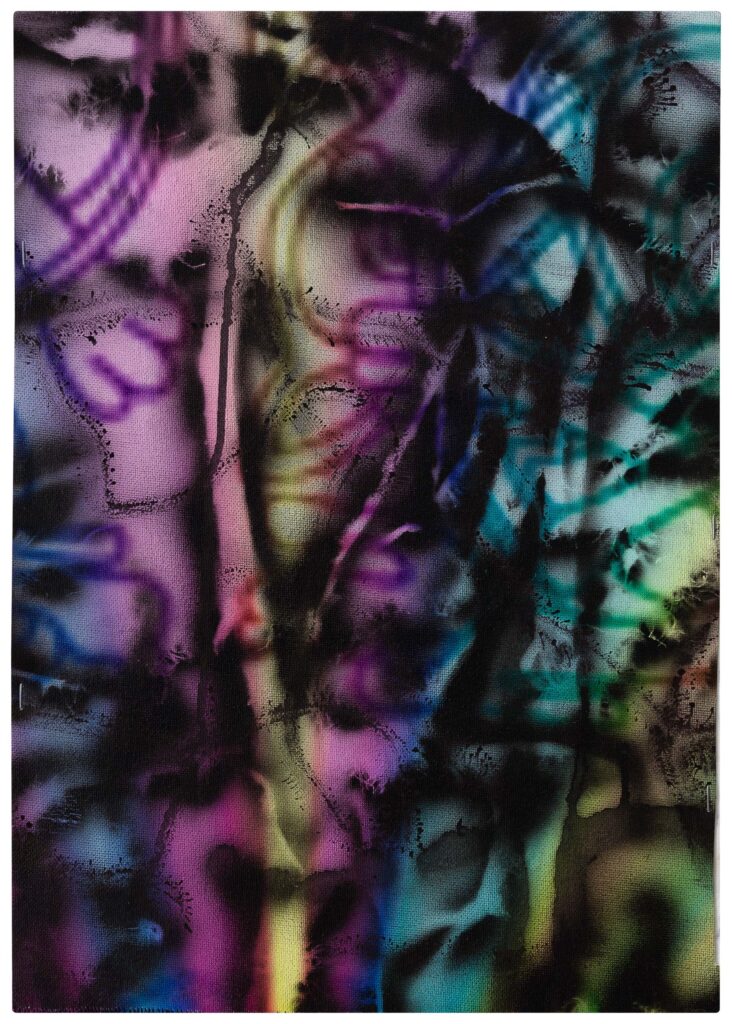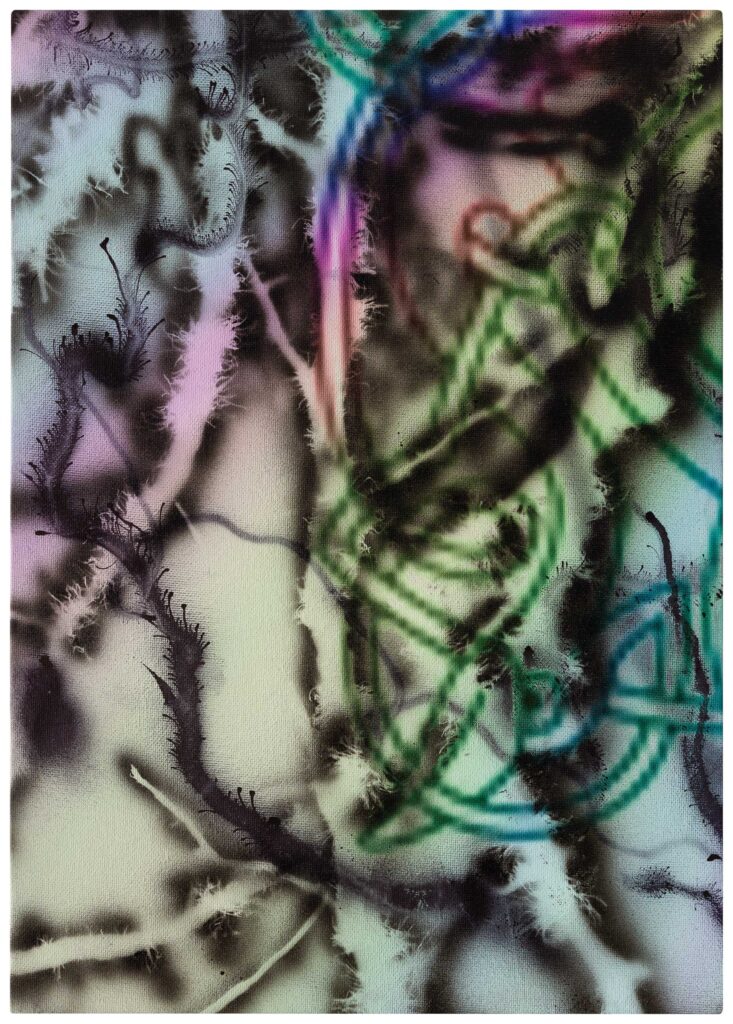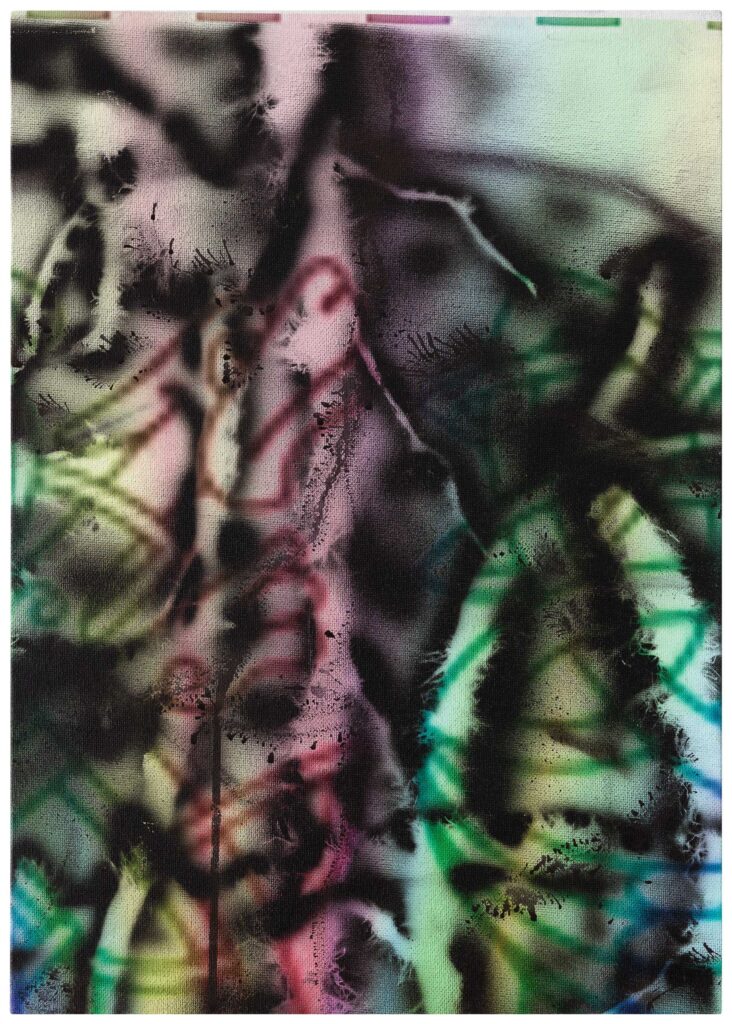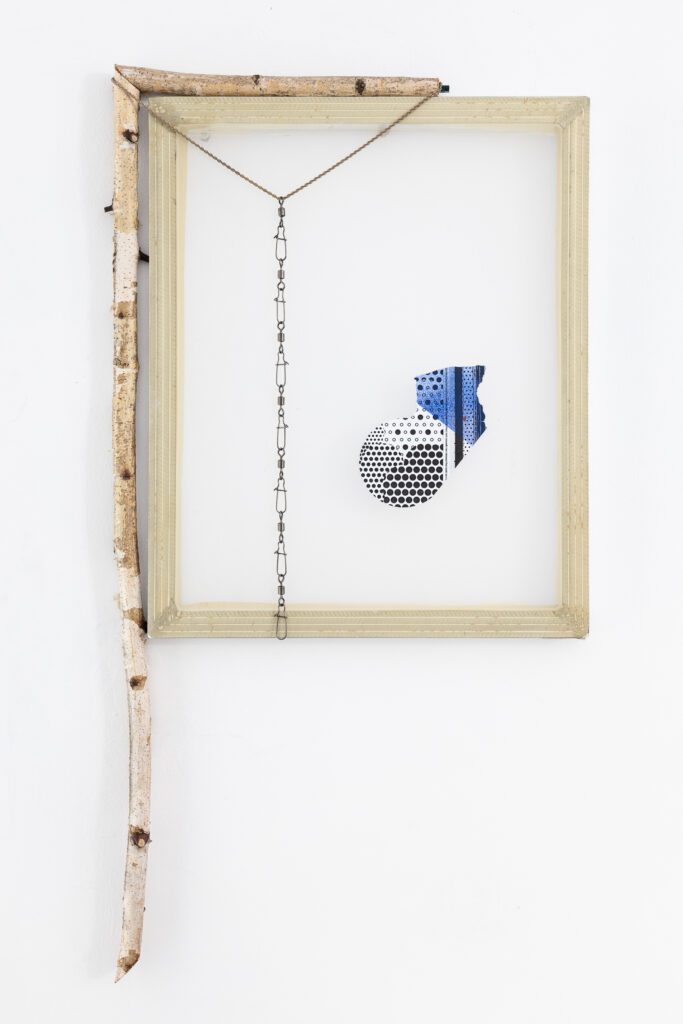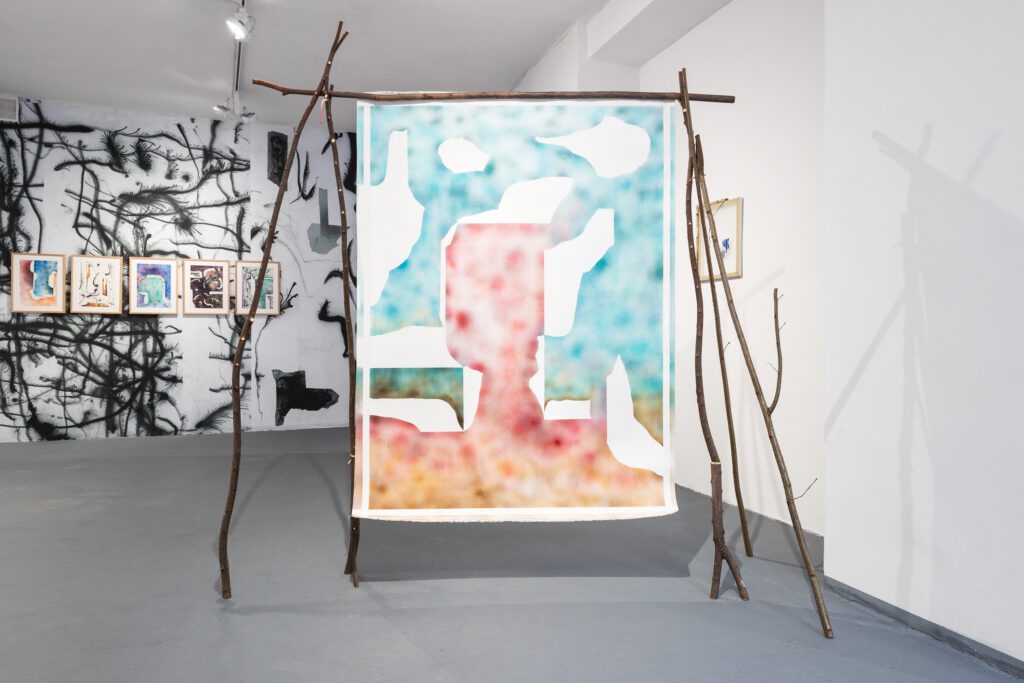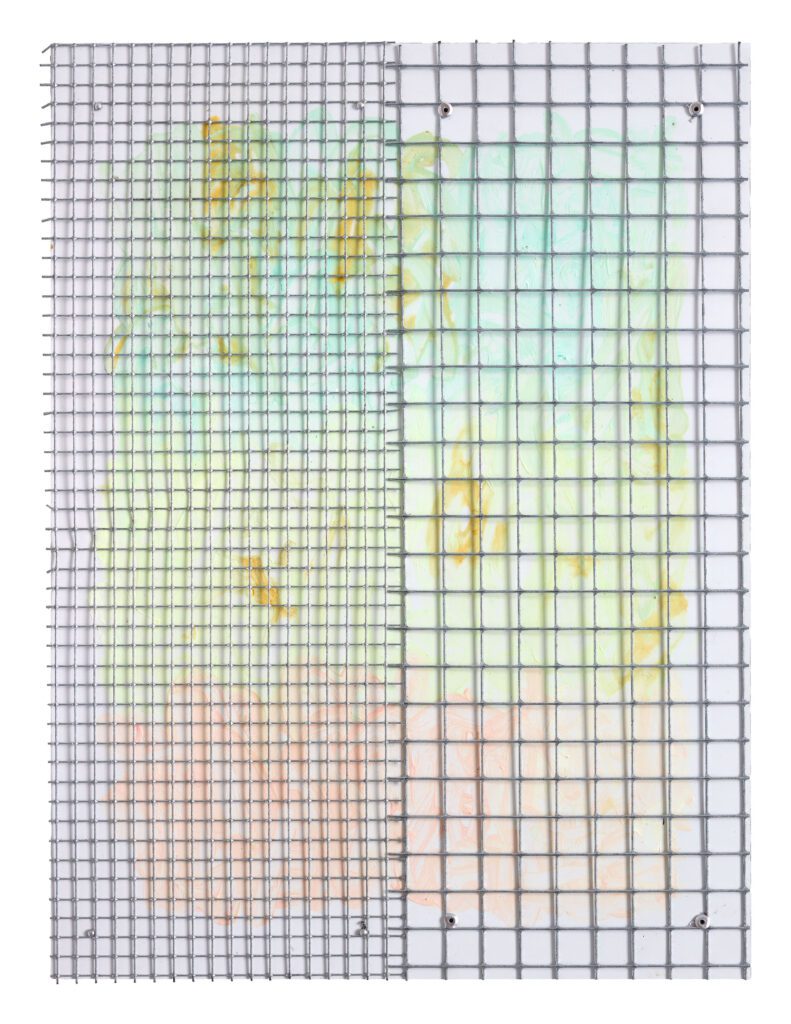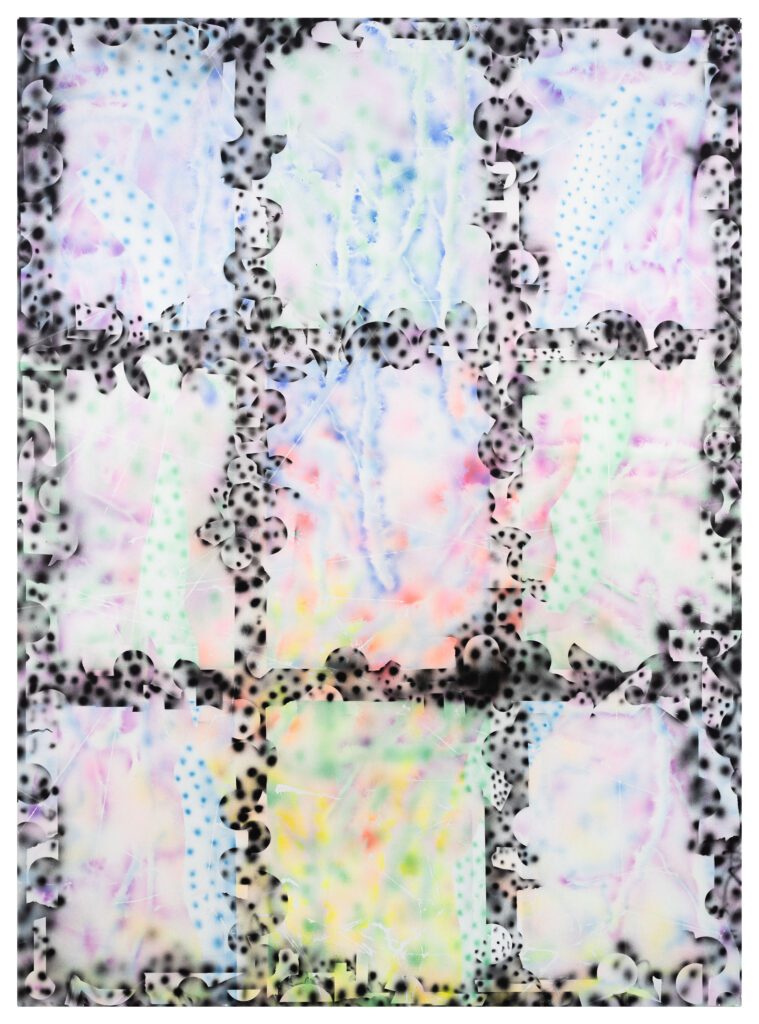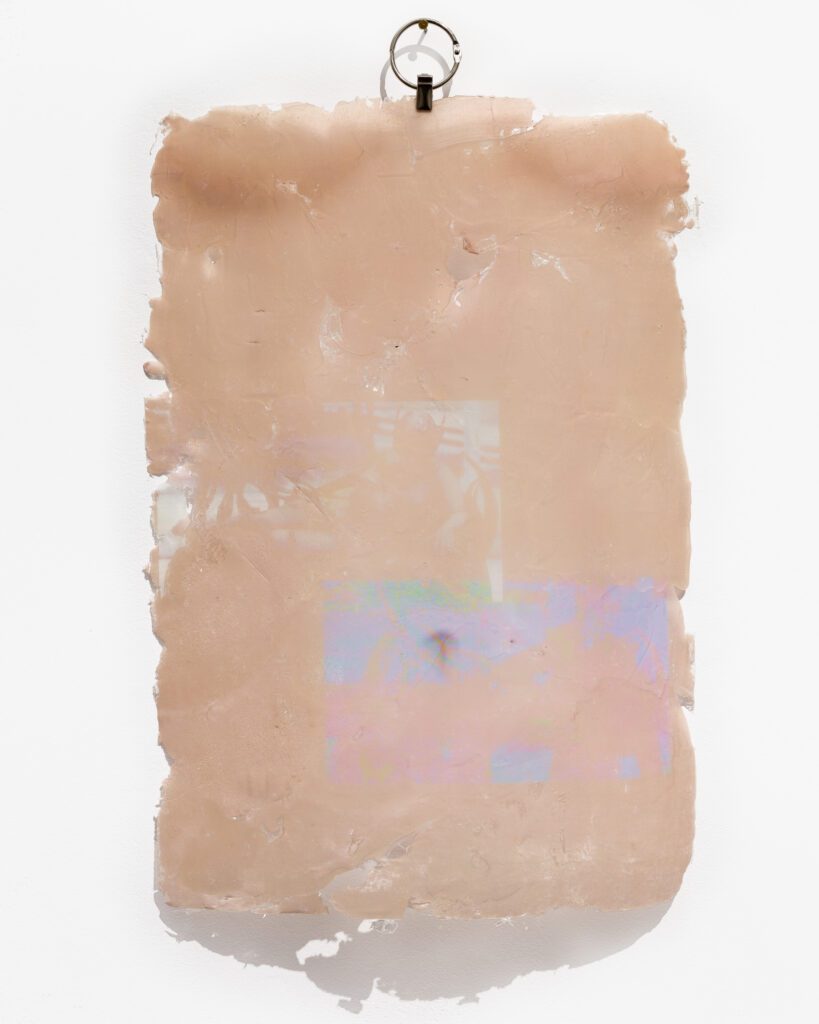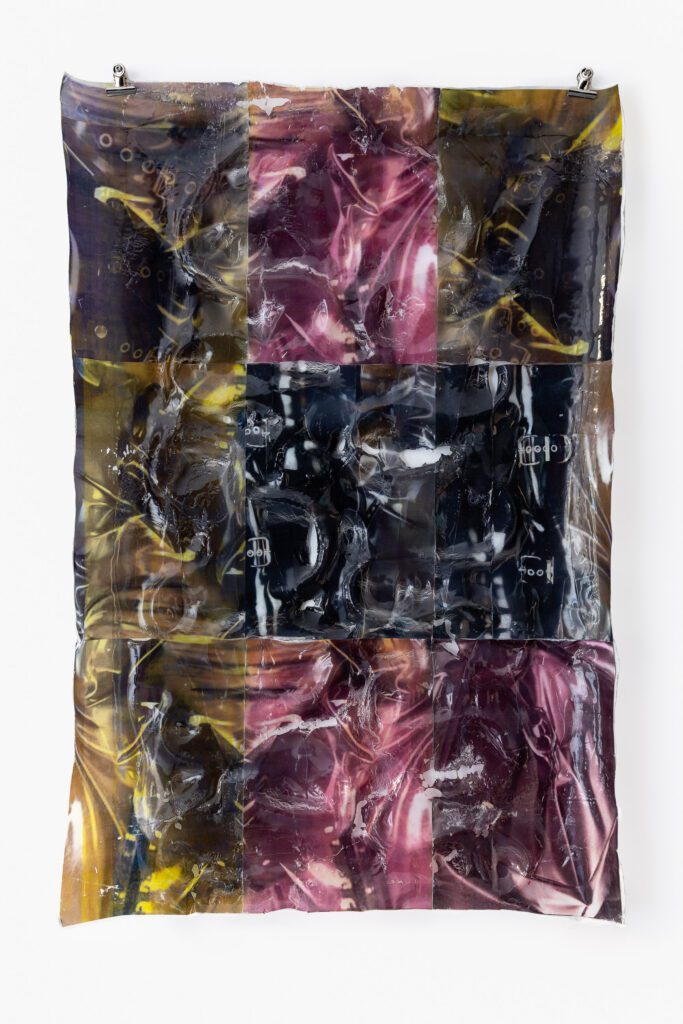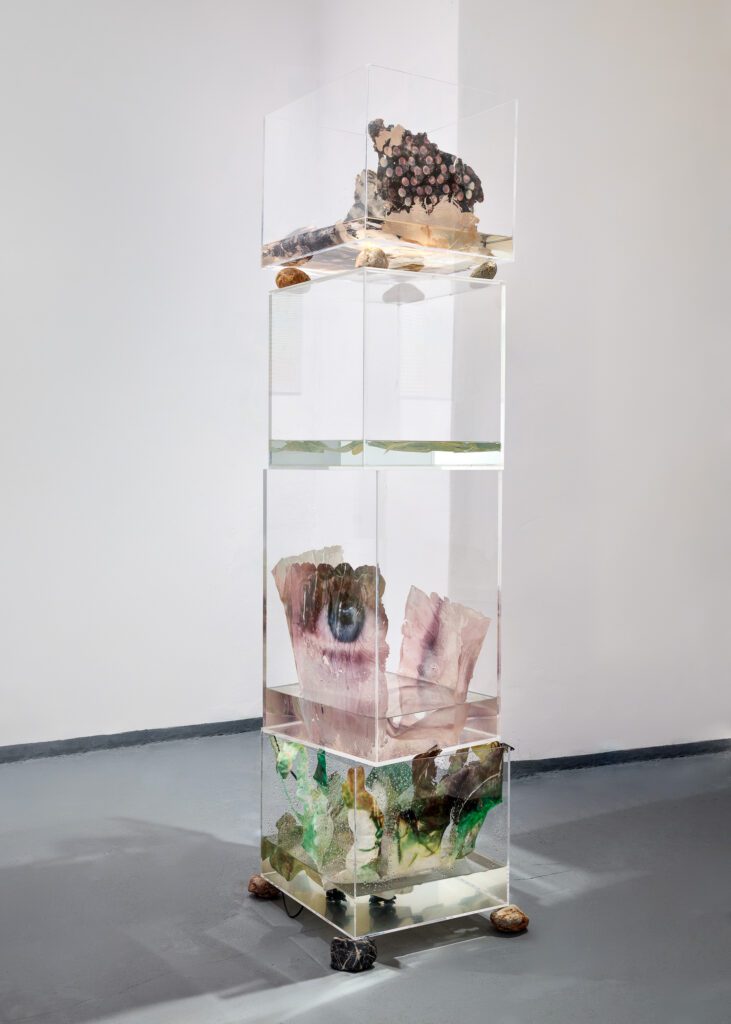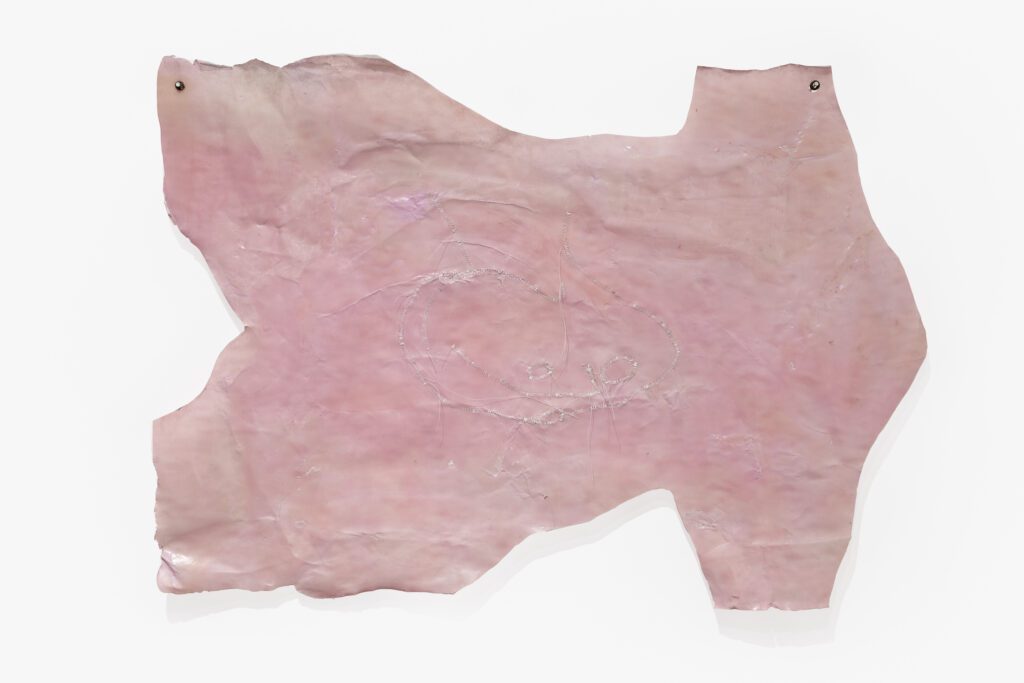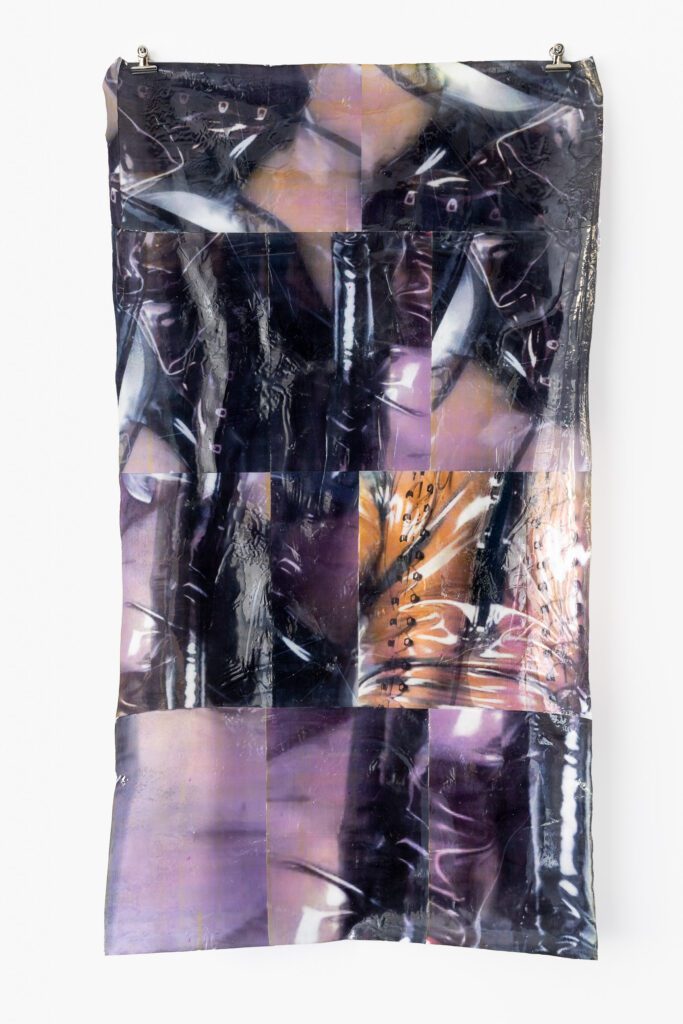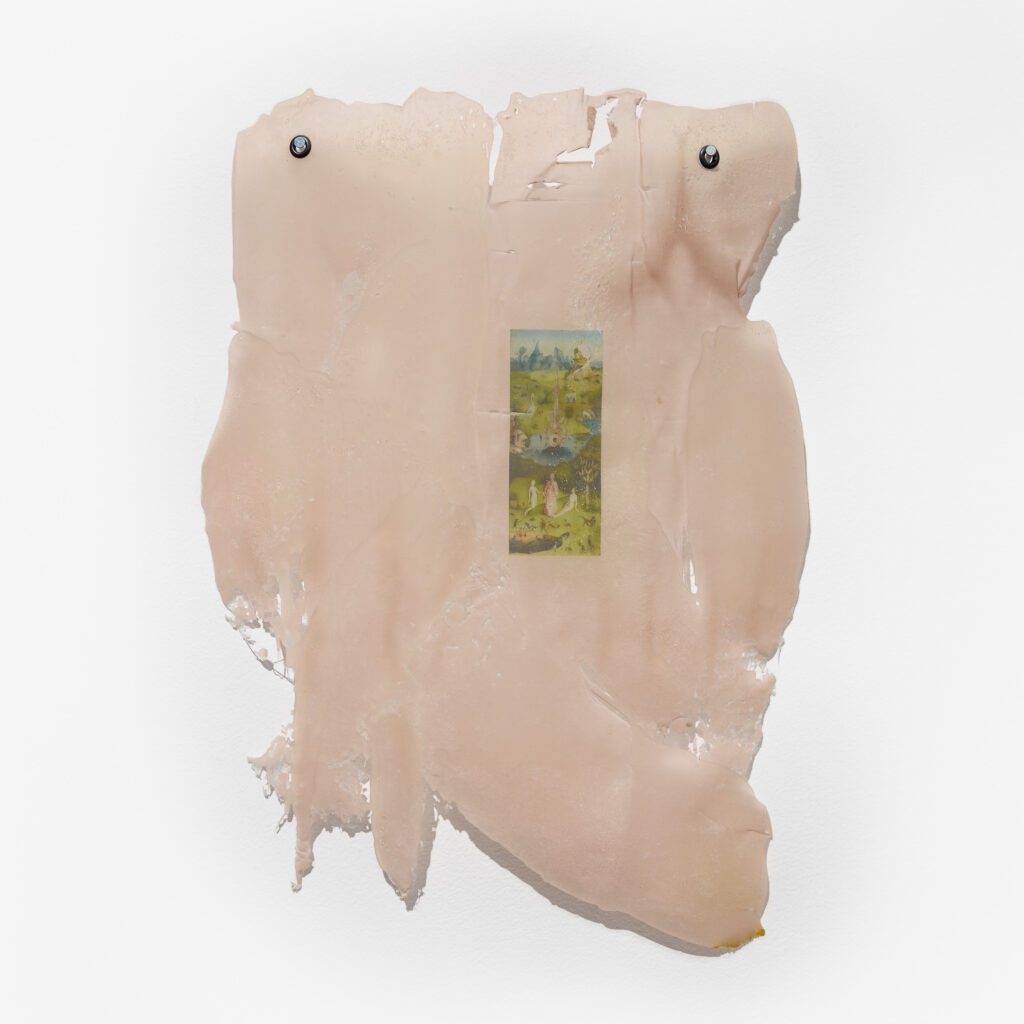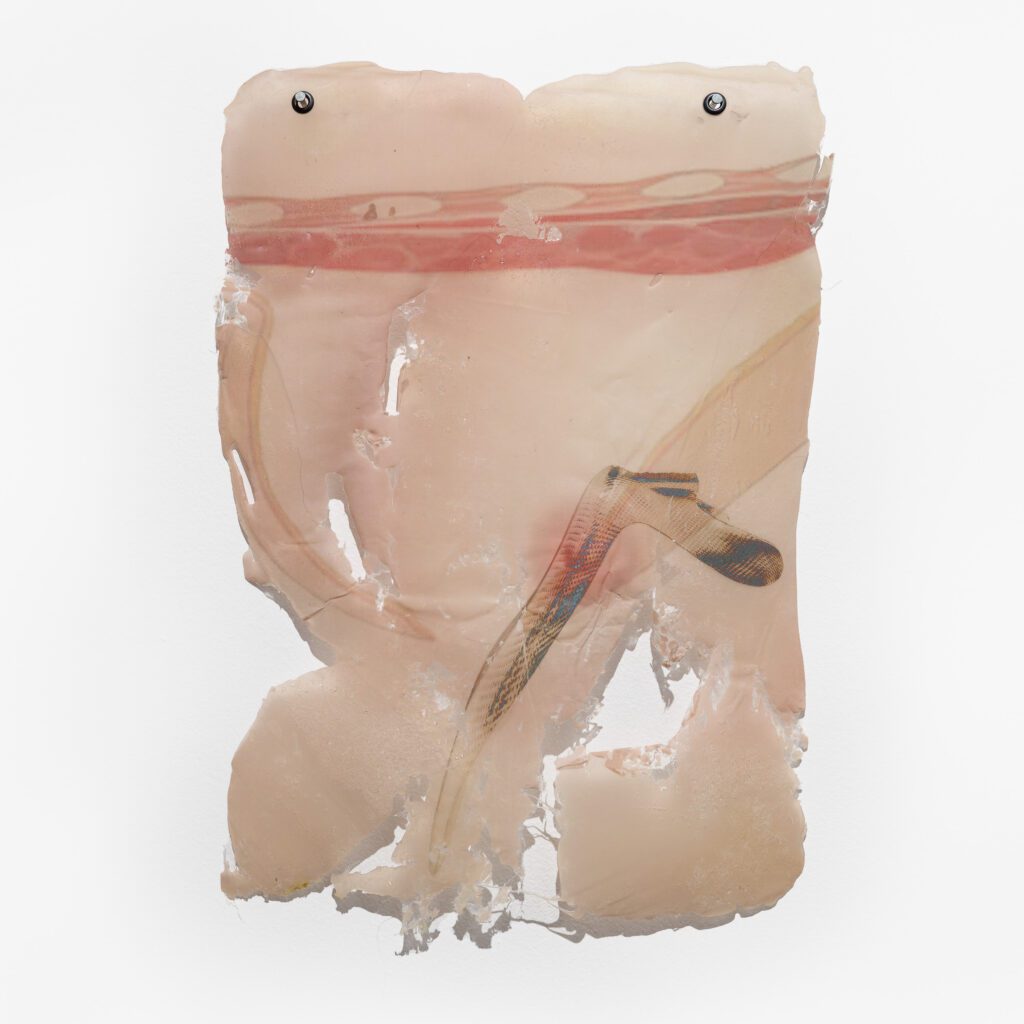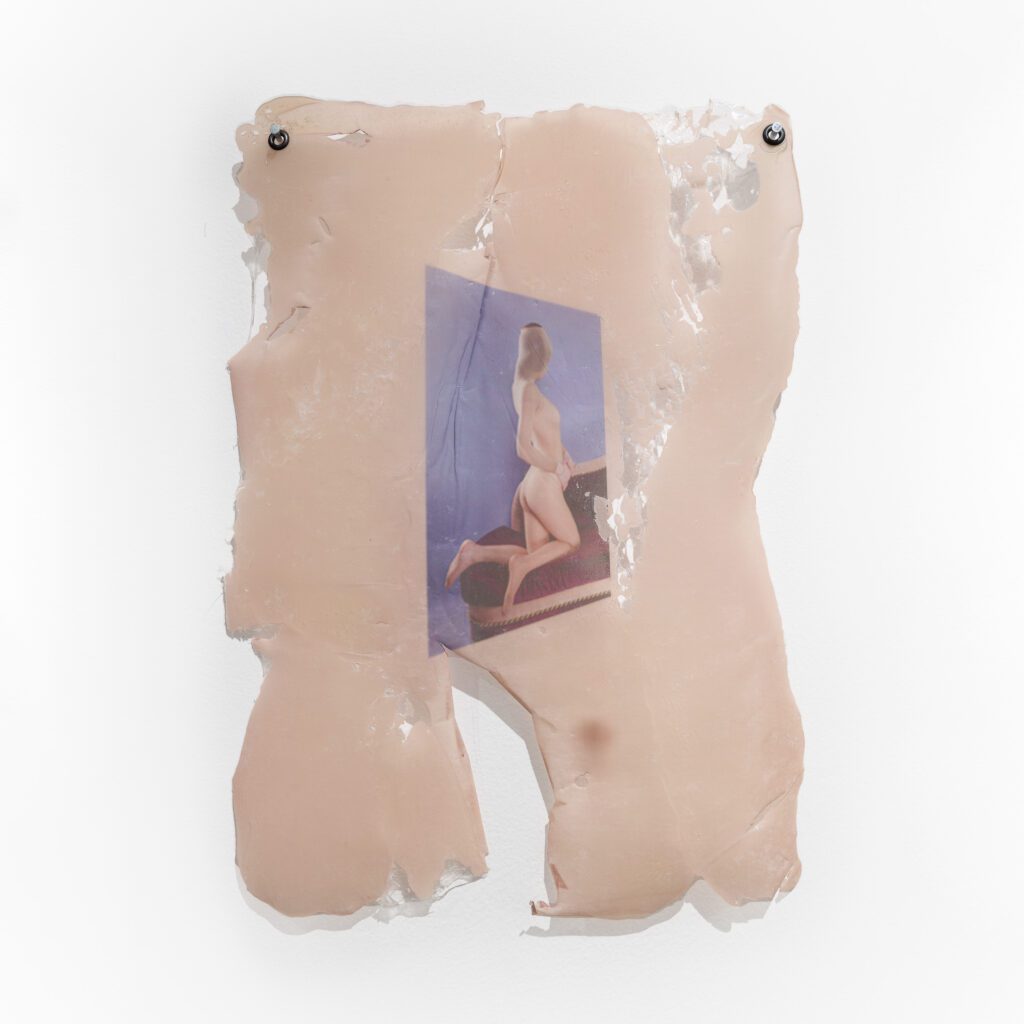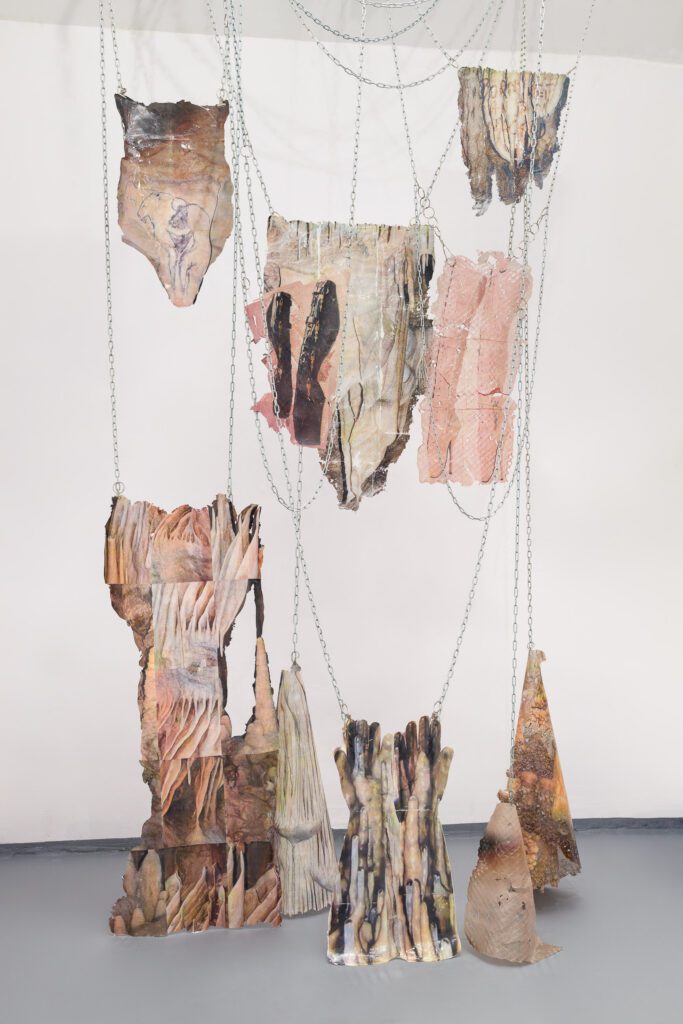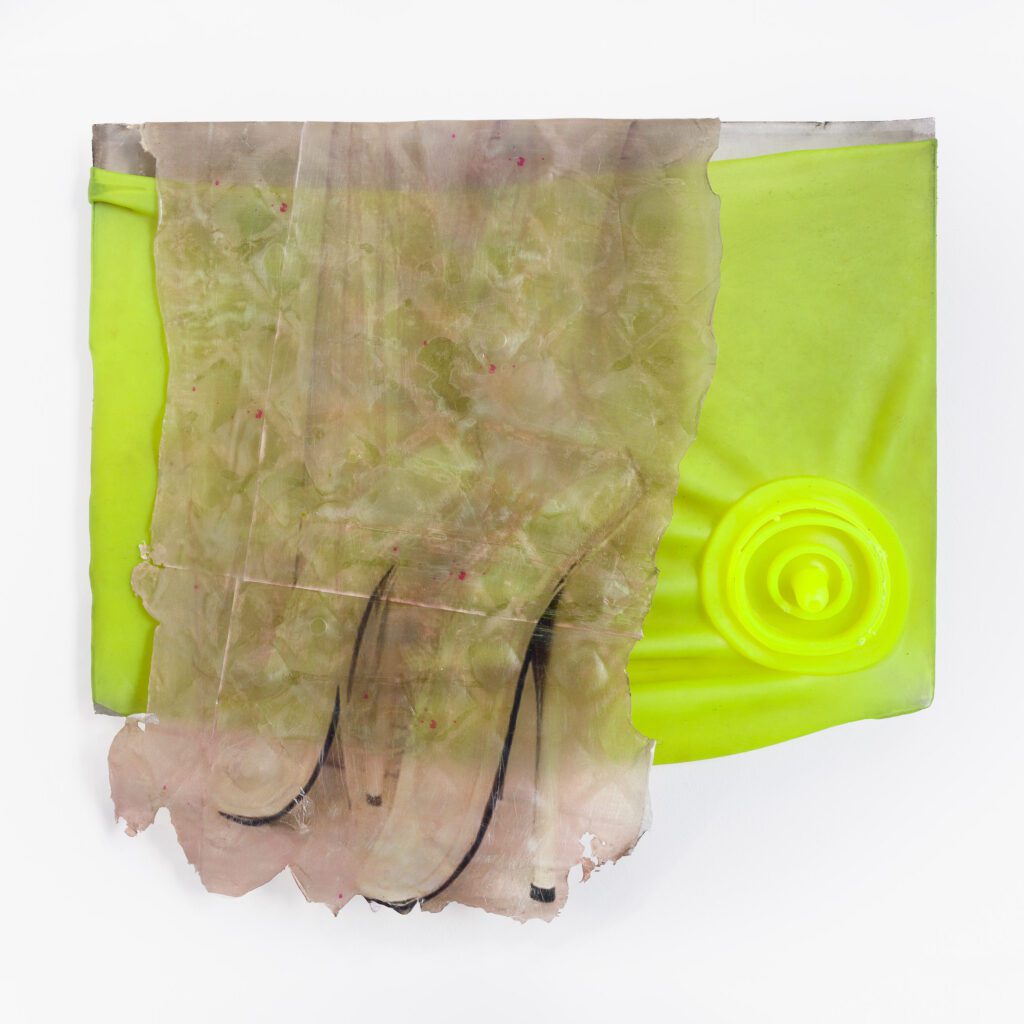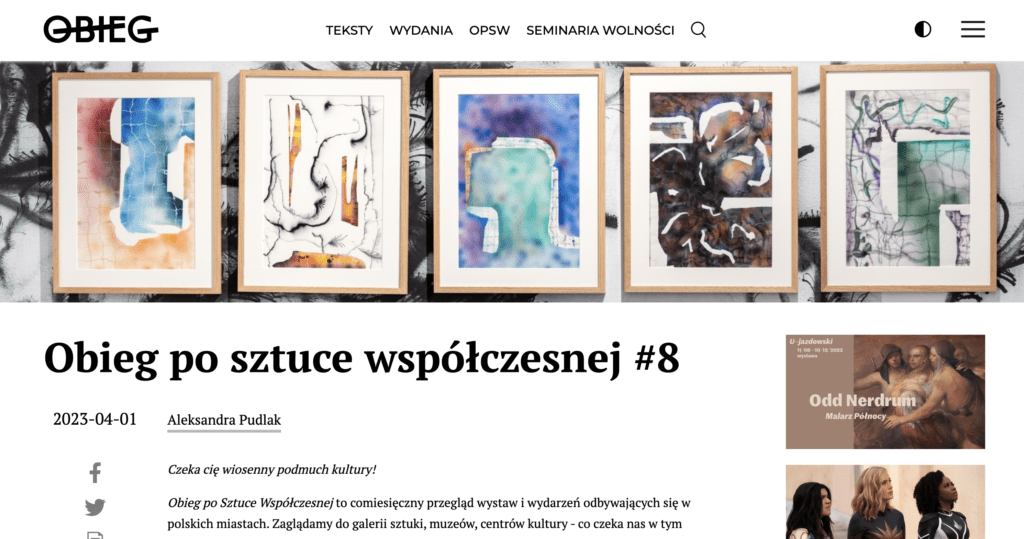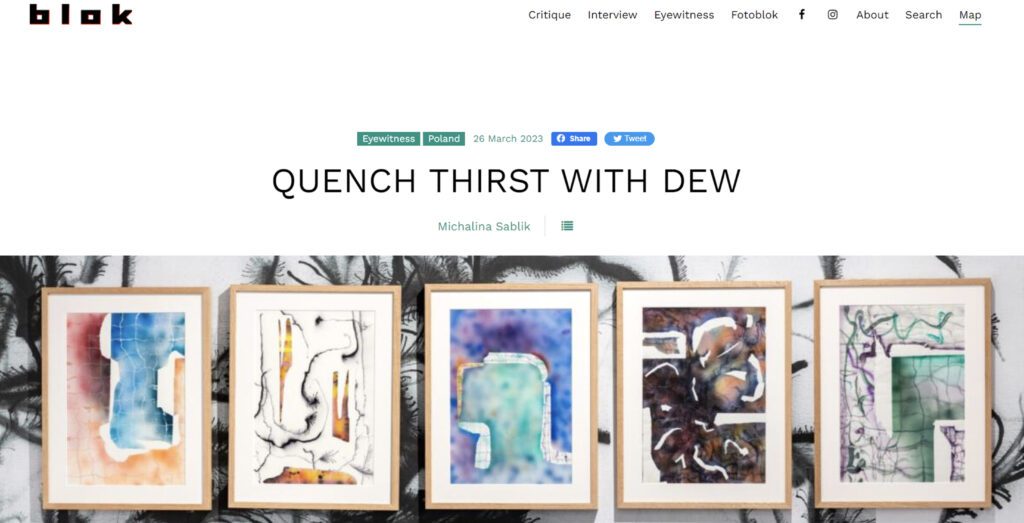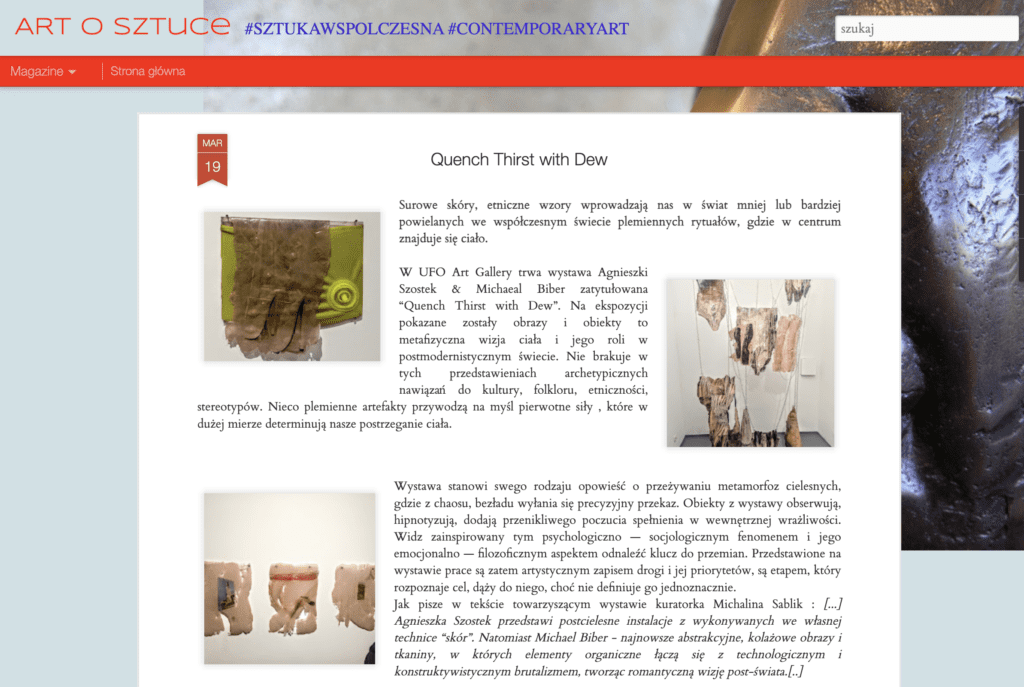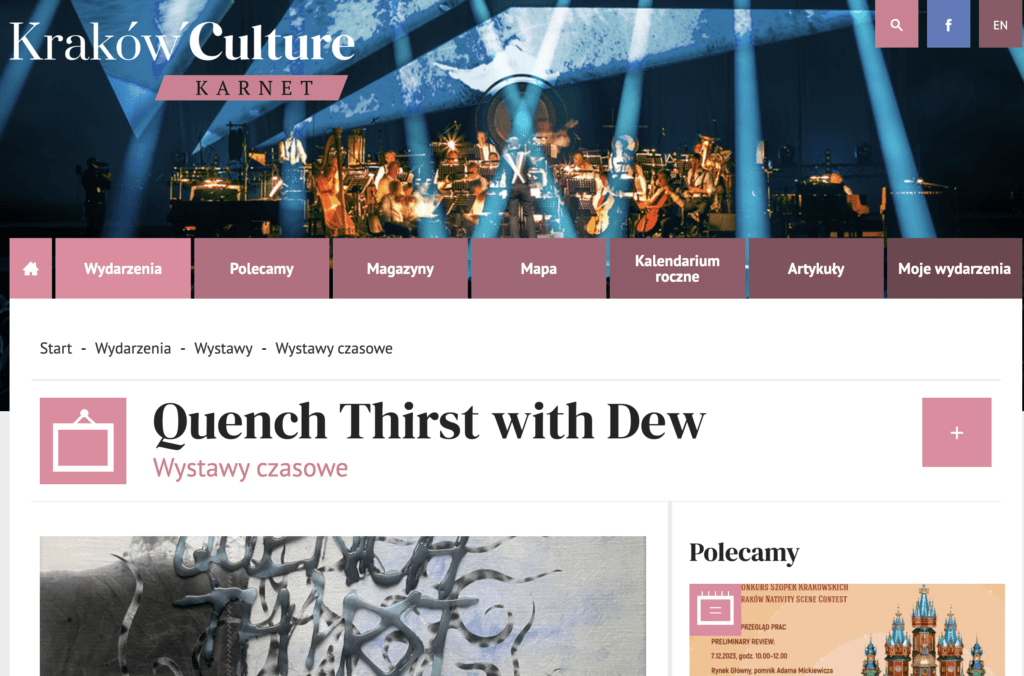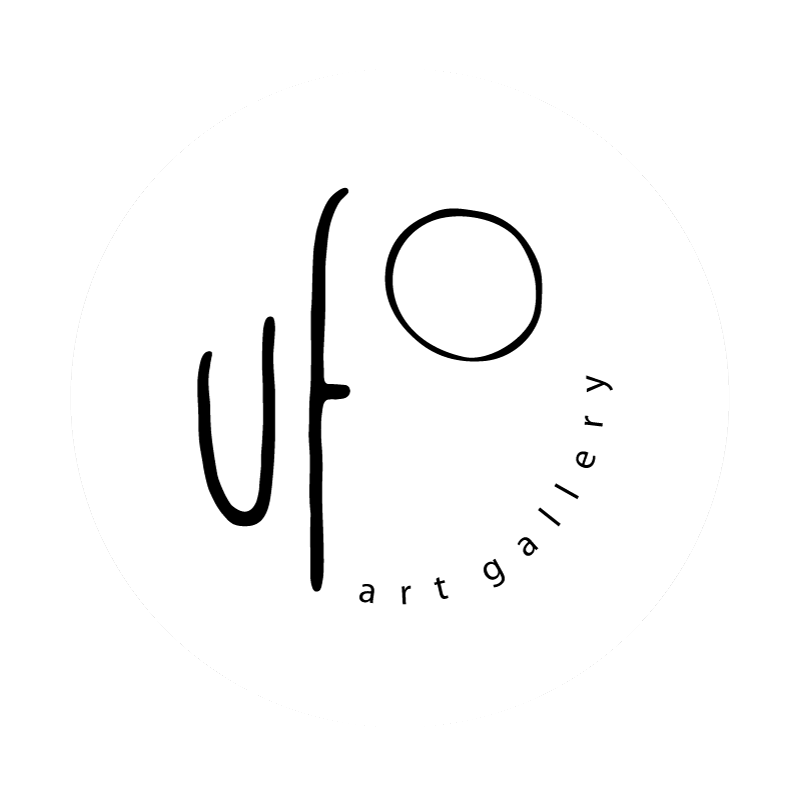Hesitantly, they dragged their heels in lace-up, knee-high, leather boots-hooves. With ASMR sounds in their headphones: low whispers, slurping, swallowing, licking of empty wrappings and dribbling spit. Wet tarmac reflected ad screens. Viscous rain dripped slowly down their latex coat. Out of the corner of their eye, they glanced at their distorted reflection in a puddle. It assumed unexpected shapes through a rainbow sheen from spilled petrol. “Is that still me?”, they anxiously tried to remember their face. A quick glimpse at their smartphone archive. They saw a person split into tens of tiny icons from various times. Their acrylic claws zoomed one picture in and, straight away, it started moving. On the other side of the screen, a hybrid twin character knelt, looking at its reflection in dark water. They were in a humid underground cave, full of stalactites and stalagmites, that smelled of sulfur and other minerals. Its wet walls showed contours of abstract drawings, excerpts of forms. All around, a scattering of pieces of printed fabrics, stacked stones, structures made of fresh twigs and feathers. The person blinked their eyes twice in disbelief. Both hybrids looked at one another, reflected in device screens, the water surface and their hungry eyes.
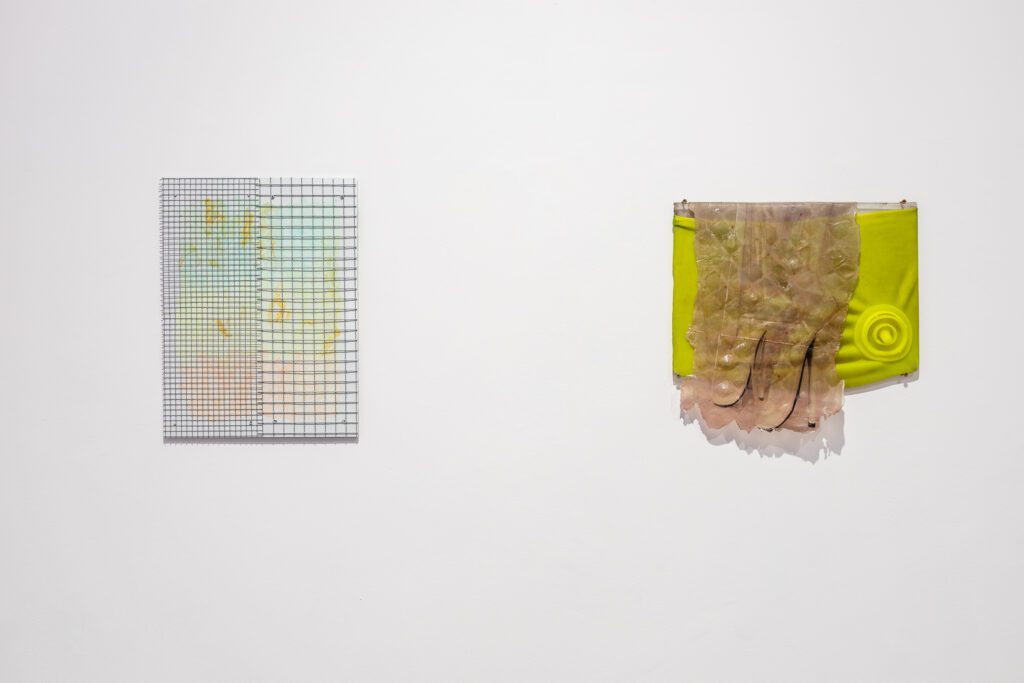

Quench Thirst with Dew at the UFO Gallery showcases works by two artists: Agnieszka Szostek and Micheal Biber. Despite their countless private connections, the exhibition is one of the first opportunities to view one artist’s output reflected in the other’s.
Michael Biber successively develops his interest in the image and post-internet aesthetics. A groundwork for his pieces is formed by a plethora of internet images we scroll through on a daily basis. Superimposed, they create an abstract noise that makes individual meanings impossible to discern. Digital colours become a spectrum of his novel palette. The artist experiments with digital prints, sampling and mash-ups of internet imagery in combination with traditional painting techniques. He employs various techniques and is incessant in exploring their combinations. He cuts out, stitches, pastes, imprints, at times making use of paint and resorting to sprays at others, creating iridescent effects, lacerations and scratches. His paintings are not always encased in rigid frames of canvases and stretchers. Often, they are given the freedom to flutter like robes or flags; the artist transforms them into dividing screens, making them spatial through an inclusion of organic elements. Biber deconstructs and re-constructs his images from fractions and fractals. Thus, he manages to create abstract forms that are dismembered, jagged, originating in various semantic orders. Organic elements, such as feathers, twigs and other leaf-like forms, are connected to a coldness of geometrically-shaped concrete. His paintings represent a vision of a post-world where the ultimate phase of dissolution is under way. It is a fantastical world, inhabited by hybrids with split personalities. Concurrently Romantic and surreal.
Hybridity, daring formal experiments and astonishing juxtapositions are also hallmarks of Agnieszka Szostek’s artistic practice. Her original artistic idiom, however, differs from Michael Biber’s. The artist has elaborated her unique technique which allows her to create a material that is a near-perfect imitation of human skin. She produces collages from digital scraps alluding to varying semantic fields, and prints them onto her skins. Frivolous costumes, shoes by avant-garde designers and sexual fetishes are conjoined with animal and primal element, cave-painting images (including, e.g., from the Cave of the Hands in Argentina) or animistic symbols. She does not stop at (in)printing, almost tattooing her skins; she cuts them, stitches together, embroiders, hangs on chains, creating sophisticated constructions with an ambience suggesting a lab interior, where creatures from the future are being brought to life in cauldrons. Things get sticky, humid, plasma-like: this is the beginning of a new, slimy life. The aesthetics of Szostek’s installations alludes to a post-human, post-body world, in which technology is intertwined with products of nature creating new forms of being. They resemble the terrifying atmosphere in Titane, a film in which all binaries and clear distinctions are blurred, while identities assume fluid, indefinite, constantly germinating and changing forms. Intriguing, horrific and slightly creepy.
Michalina Sabik
